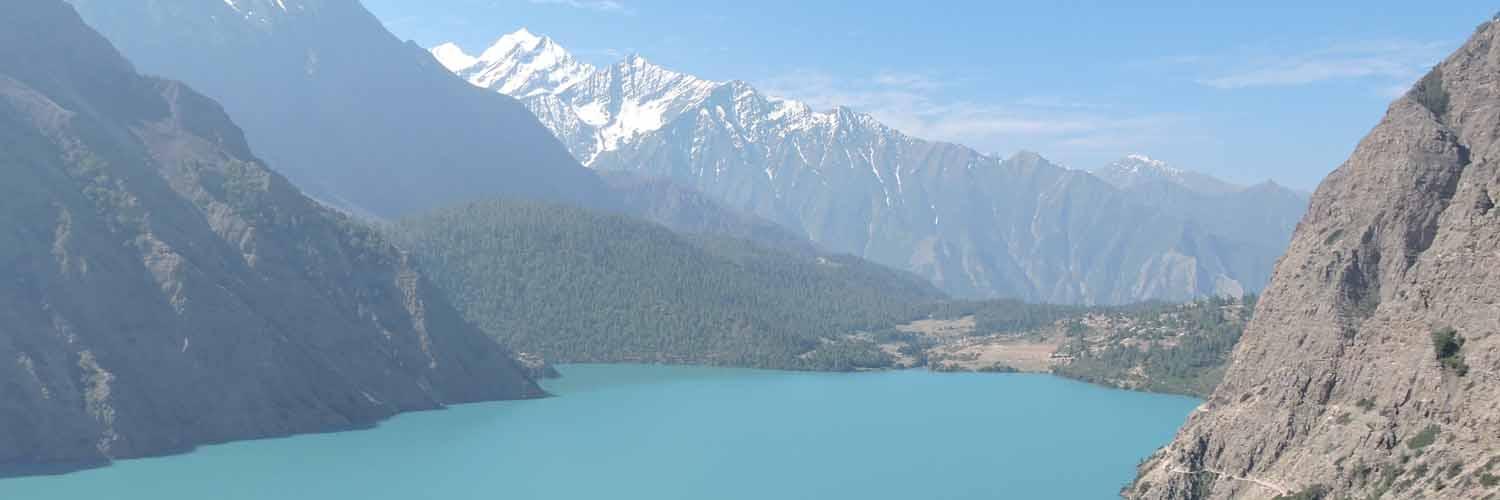1. Where is Upper Dolpo Trek located?
Upper Dolpo Trek is located in the remote western Himalayas of Nepal, bordering Tibet
2. What is the best time for Dolpo Camp Trek?
The Upper Dolpo Trek typically takes 23 days to complete, including acclimatization days and exploration time in the region.
3. What is the best time to undertake the Upper Dolpo Trek?
The best time for the Upper Dolpo Trek is during the spring (April to June) and autumn (September to November) seasons, when the weather is stable and views are spectacular.
4. Is a permit required for the Upper Dolpo Trek?
Yes, a special Upper Dolpo Restricted Area Permit is required for the trek, along with the standard Annapurna Conservation Area Permit (ACAP) and Trekkers’ Information Management System (TIMS) card.
5. What are the major attractions of the Upper Dolpo Trek?
The major attractions of the Upper Dolpo Trek include the stunning landscapes of the Dolpo region, ancient Tibetan Buddhist monasteries, unique cultural encounters with the local people, and the chance to see the iconic Shey Phoksundo Lake.
6. Is the Upper Dolpo Trek difficult?
Yes, the Upper Dolpo Trek is considered a difficult and strenuous trek. It involves walking at high altitudes, crossing high passes, and navigating through challenging terrain. Previous trekking experience and good physical fitness are required for the trek.
7. Is a special permit required for the Dolpo Camp Trek?
Yes, you need special permits to trek in the Upper Dolpo region as Dolpo region is a remote and restricted area that requires a Special Permit. It costs USD500 per person for the first 10 days and beyond that USD50 per person per day.
8. Are there tea houses or lodges along the Upper Dolpo Trek route?
Unlike some popular treks in Nepal, the Upper Dolpo region has limited tea houses or lodges. You may need to rely on camping during the trek. We provide fully supported camping treks with experienced guides, cooks, and porters.
9. How do I get to the starting point of the Upper Dolpo Trek?
A flight from Kathmandu to Nepalgunj and then another from Nepalgunj to Juphal commonly starts the trip. The trek starts at Juphal.
10. What is the maximum altitude reached during the Upper Dolpo Trek?
The trek reaches its highest point at the Nangdala Pass, which is approximately 5,350 meters (17,550 feet) above sea level.
11. What about weather condition and Jumla flight?
Upon arriving at Nepalgunj, we will catch a flight to Jumla the following morning to begin our trek. However, please note that the flight schedule may be affected by the unpredictable weather conditions in Jumla, resulting in potential delays or cancellations. In such cases, if the weather is persistently unfavorable, we will arrange for a helicopter flight at an additional cost to ensure the continuity of your trip. Please be aware that helicopter flights are more expensive than regular flights, and you will need to pay the additional fee after deducting the cost of the Jumla flight.
12. Is there chances of altitude Sickness and what are the Symptoms?
At elevations above 3000 meters, individuals may experience altitude sickness, which occurs when the body struggles to adapt to high altitude and low oxygen levels. Symptoms of altitude sickness can include headache, vomiting, and sleep disruption. If any of these symptoms arise, it is crucial to consult your guide promptly. Our guides are highly trained and experienced in altitude trekking and managing sickness-related issues. They will assess the situation and determine the best course of action accordingly.
13. How to avoid Altitude sickness?
To prevent sickness in the Himalayas, it is advisable to consume ample amounts of water, eat complete meals, and avoid alcohol. In case you do experience altitude sickness, the medicine Diamox can be helpful in managing symptoms and facilitating the ascent to higher elevations. Additionally, it is crucial not to overlook the importance of acclimatization while ascending, as this gradual process allows the body to adapt to higher altitudes properly.
14. How to prepare for Upper Dolpo trek?
It is recommended to engage in physical fitness activities such as running, swimming, and walking before embarking on your Upper Dolpo trek. Individuals with pre-existing medical conditions should consult a doctor before considering the trek. It is common to experience some discomfort until fully acclimatized during the trek.
15. In addition to physical fitness, mental preparedness is also crucial for outdoor activities. ?
During the Dolpo trek, there are no guesthouses available, and you will be staying in tents. Meals will be provided at our campsite, prepared by a professional cook. There will be temporary toilets set up by our Sherpa staff for your convenience. It is important to be prepared for these conditions.
16. How safe is Upper Dolpo Trek?
We prioritize your safety above all else. We have always upheld stringent safety measures throughout our trekking experiences, ensuring that our guides are extensively trained and equipped to safeguard our clients, even in remote regions.
17. Can I charge my mobile or camera battery?
During the camping trek, it can be quite challenging to locate a place to charge our gadgets. However, if we are near a village, we can somehow manage to find a charging point. Alternatively, we can bring a portable solar panel with us to ensure we can charge our devices.
18. What is the arrangements during emergencies?
In the event of an unexpected emergency, such as severe high-altitude sickness or an accident, there will always be a safety net in place. If necessary, you will be promptly taken to the nearest hospital or rescued by helicopter and transported to a hospital as quickly as possible. It is important to note that you are fully responsible for any costs associated with these emergency services. Therefore, it is highly advisable to ensure that your travel insurance provides coverage for both medical expenses and emergency evacuation expenses.


